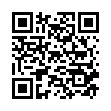|
Physics
Forming the diagrams of electrically tunable plasmonic graphene stripe nanoantennas in the terahertz and far-, mid-infrared ranges
G. S. Makeeva
Penza State University, Penza
Abstract:
Background. The purpose of this work is to study, using automated modeling methods, the possibility of scanning in frequency and forming radiation pattern (RP) of plasmonic graphene strip nanoantennas, electrically tunable by changing the chemical potential graphene of graphene, in the terahertz (THz) and far-, mid-infrared (IR) ranges. Materials and methods. Graphene, which has exceptional electromagnetic, mechanical, electrical and thermal properties, is promising for reconfigurable THz antennas due to its high conductivity and tunability in the THz range. Modeling of the characteristics of THz plasmonic graphene strip nanoantennas for various values of chemical potential was carried out using the CST Microwave Studio 2023 application package. Results. The results of modeling the controllability of the reflection coefficients at the input of the nanoantenna and the radiation patterns at the resonant frequencies of the fundamental and second-order modes of surface plasmon polaritons were obtained when changing the values of the chemical potential (0.3-0.7 eV) in the THz and far-, mid-IR ranges. Conclusions. From the simulation results it follows that it is possible to tune operating frequencies (frequency scanning) from THz to the far-, mid-IR ranges and form a multi-beam radiation pattern of reconfigurable graphene strip nanoantennas by changing the chemical potential of graphene (by applying an external electric field) without changing their geometry and dimensions.
Keywords:
plasmonic graphene strip nanoantenna, radiation pattern, reflection coefficient, chemical potential, surface plasmon polaritons
Citation:
G. S. Makeeva, “Forming the diagrams of electrically tunable plasmonic graphene stripe nanoantennas in the terahertz and far-, mid-infrared ranges”, University proceedings. Volga region. Physical and mathematical sciences, 2024, no. 2, 91–102
Linking options:
https://www.mathnet.ru/eng/ivpnz799 https://www.mathnet.ru/eng/ivpnz/y2024/i2/p91
|

| Statistics & downloads: |
| Abstract page: | 15 | | Full-text PDF : | 9 | | References: | 8 |
|




 Contact us:
Contact us: Terms of Use
Terms of Use
 Registration to the website
Registration to the website Logotypes
Logotypes







 Citation in format
Citation in format 